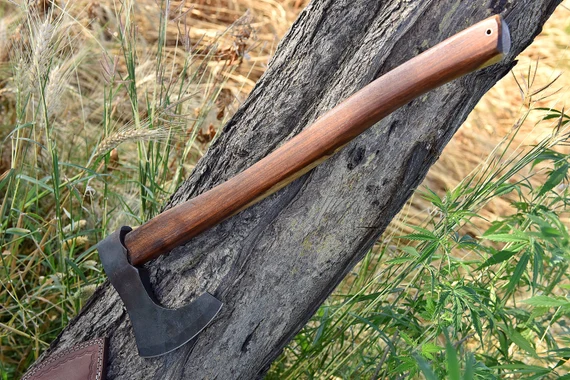In the realm of ancient legends and mythical tales, few weapons have captured the imagination quite like the Viking battle axe. Wielded by fierce Norse warriors who roamed the seas and lands with unrivaled ferocity, the battle axe was not only a tool of war but a symbol of power, destiny, and the supernatural. The fabled strikes of the Viking battle axe were said to be accompanied by an aura that transcended the physical realm, instilling fear and awe in the hearts of those who witnessed its devastating power. In the sagas and myths of the Norse people, the battle axe held a special place, often associated with the gods themselves. One of the most renowned examples is Thor, the thunder-wielding deity, who wielded the mighty, a hammer that shared similarities with the battle axe. Similarly, the Viking battle axe was seen as a conduit between the earthly and supernatural realms, a manifestation of the warrior’s strength and connection to the gods.

The aura of the Viking battle axe’s strikes was believed to be a manifestation of the warrior’s spirit and the forces of nature converging. As the axe swung through the air, it was said to leave behind a trail of shimmering energy, an otherworldly glow that hinted at the extraordinary power contained within its blade. This supernatural aura was thought to be a sign of the gods’ favor, an affirmation of the warrior’s courage and skill in battle. It was said that this aura could even affect the morale of allies and enemies, inspiring allies to fight with renewed vigor and sowing doubt and trepidation among foes. Legends recount battles where Viking warriors, driven by an almost trance-like state, hewed through enemies with their battle axes, the very air crackling with the energy of their strikes. These tales often speak of warriors entering a berserker rage, a state of frenzied combat where the line between mortal and supernatural blurred.
In this state, warriors were believed to be possessed by animal spirits or even gods, channeling their divine strength through their weapons. The battle axe, with its sharp blade and imposing form, became a conduit for this primal energy, enhancing the aura of the strikes and making them even more devastating. Furthermore, the craftsmanship and symbolism behind the Viking battle axe contributed to its supernatural reputation. Skilled blacksmiths forged these axes with meticulous care, imbuing them with not only exceptional physical attributes but also mystical qualities. Handgeschmiedete Äxte etched onto the axe heads often depicted scenes from Norse mythology, further reinforcing the connection between the weapon and the divine. This craftsmanship, combined with the warrior’s dedication and the axe’s practical effectiveness, elevated the weapon to a status beyond mere tool, transforming it into a vessel of the mystical. Whether in the hands of a legendary hero or an ordinary warrior, the battle axe’s supernatural aura served as a reminder of the ancient Norse belief in the unseen forces that shaped their world, a belief that continues to captivate and inspire to this day.